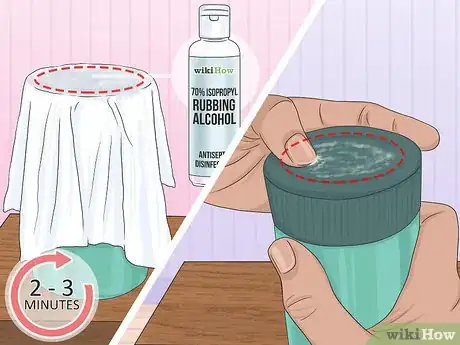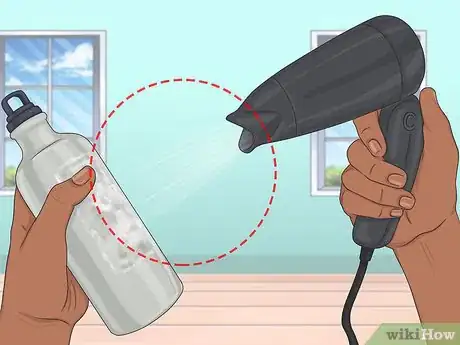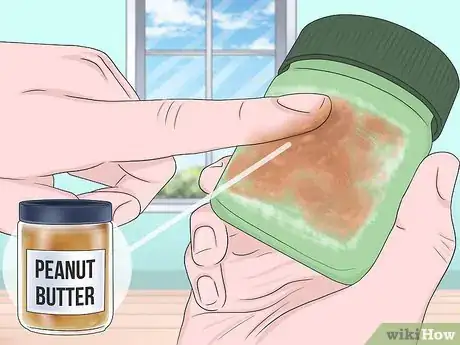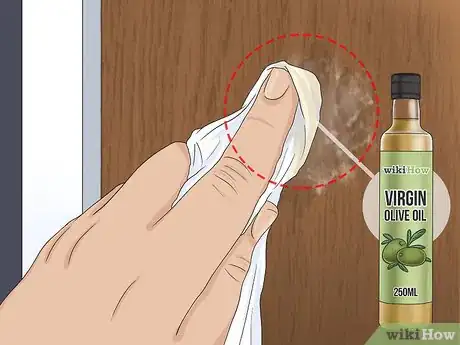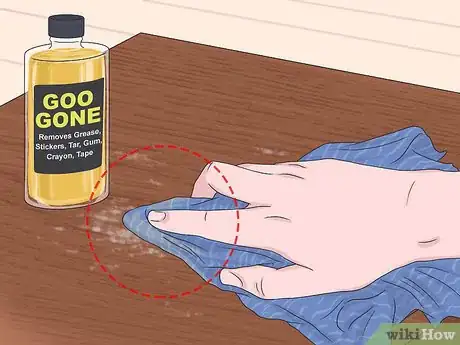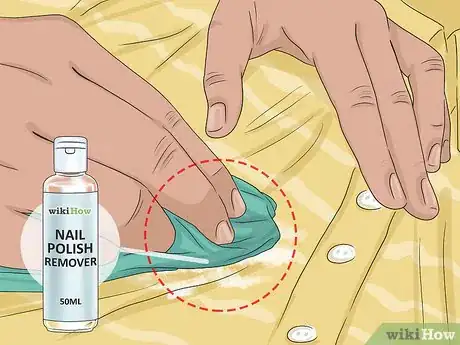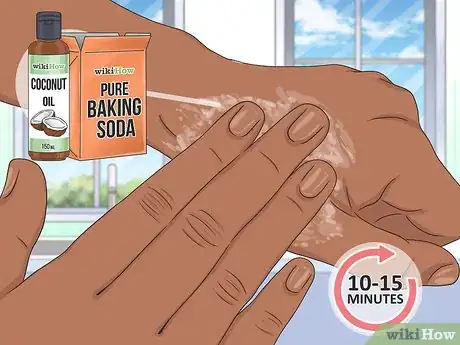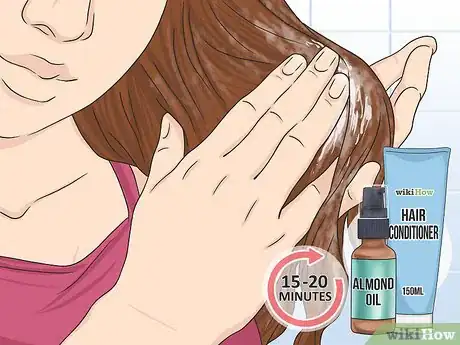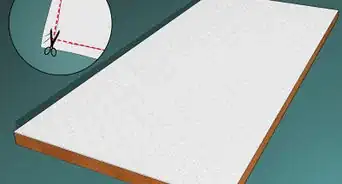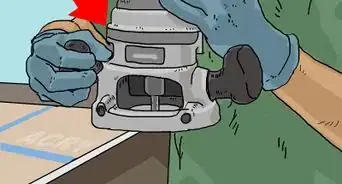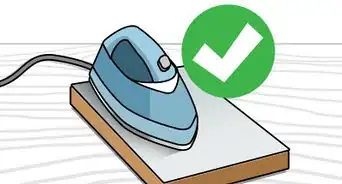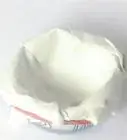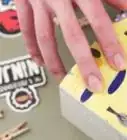X
This article was co-authored by Claudia & Angelo Zimmermann. Claudia and Angelo Zimmermann are the founders of Everneat, an Eco-Friendly Cleaning Service based in New York City and in Connecticut. They are also the founders of Clean Code, a DIY 100% natural cleaning product line.
This article has been viewed 114,546 times.
Sticker and glue residue can be a hassle to get off of surfaces after you take off a sticker or accidentally get a spot of glue where it shouldn’t be. Even if you were able to peel off or wipe up the majority, many glues leave behind a sticky residue. Fear not, by using just a few common household products, you can remove almost any type of glue residue from any surface!
Steps
Method 1
Method 1 of 3:
Getting Sticker Residue Off Plastic, Metal, or Wood
-
1Scrape off the residue with the edge of an old credit card. Scrape away from you with the edge of the credit card. Try different angles to see what works best to get the residue off.
- Use a plastic scraper or plastic knife as an alternative to a credit card, but avoid sharp metal scrapers or knives that may damage the surface.[1]
-
2Dissolve the residue with rubbing alcohol, vodka, or vinegar. Soak part of a clean cloth or paper towel in rubbing alcohol. Lay the wet cloth on top of the residue and let it sit for 2-3 minutes to let the solvent soak into the glue. Scratch away the residue with your fingers or something plastic after you let it soak.
- Repeat this process as many times as you need to get rid of the glue residue.[2]
Advertisement -
3Loosen the residue with a hair dryer. Aim the hair dryer at the glue spot and turn it on high heat for 2-3 minutes. Scrape off the residue with your fingers and repeat the process as needed until it is gone.
-
4Put peanut butter on the glue residue and let it sit until it softens. Test the residue with your fingernail every 2-3 minutes to see if it is softening. Wipe it off with a clean cloth to clean up the peanut butter and sticker residue.
-
5Apply cooking oil to the glue spot with a paper towel. Dab any cooking oil, like olive oil or canola oil, onto a paper towel and place it over the sticker residue and let it sit. Wait 2-3 minutes while the oil dissolves the glue, remove the paper towel, and scrape away the residue with your fingers or a plastic scraper.
Advertisement
Method 2
Method 2 of 3:
Dealing with Tough Glue Residue
-
1Spray WD-40 onto the residue and let it sit for 10-15 minutes. Use the little red straw that comes with the can of WD-40 to spray precisely onto the glue spot. Wipe the WD-40 off with a clean cloth.[5]
- Make sure your space is well ventilated. Move the surface you are working on outside or to a more ventilated area if possible. Open any doors and windows that you can to create good airflow.
- Test a small bit of WD-40 on a hidden area of the surface first to make sure it does not stain it.
-
2Use a commercial glue remover such as Goo Gone. Read the manufacturer’s instructions on the packaging and follow them to remove the sticky spot. Test the commercial remover somewhere inconspicuous on the surface to make sure it does not damage it.
- Be particularly careful when you use a commercial glue remover on a wooden surface.
-
3Soak glue residue with paint thinner to dissolve it. Dampen a clean cloth with paint thinner and rub the glue spot until it breaks down and wipes off. Don’t use paint thinner on surfaces that have paint or varnish unless you are prepared to repaint them!
- Read all safety warnings and instructions on the can of paint thinner and work in a ventilated area.
Advertisement
Method 3
Method 3 of 3:
Removing Glue Residue on Other Common Surfaces
-
1Use nail polish remover to remove glue from fabric. Apply nail polish remover to a clean cloth and rub the glue spot. Use another clean cloth and plain water to clean the affected area after you have removed the residue with the nail polish remover then let it dry.[6]
- Make sure the nail polish remover you use contains acetone or it will not work.
- Test the nail polish remover on a non-visible part of the fabric first to see if it damages the fabric at all.
-
2Make a paste of coconut oil and baking soda to clean glue off of skin. Mix equal parts coconut oil and baking soda into a paste and apply it to your skin. Let it sit for 10-15 minutes and then gently rub your skin to remove the residue.
- Melt the coconut oil in a microwave or a pot on a stovetop first if it is solid.
-
3Remove glue from hair with oil and hair conditioner. Rub olive oil, baby oil, or almond oil into your hair and let it sit for at least 15 minutes. Rinse the oil out in the shower, then put hair conditioner in your wet hair and let it sit under a towel for 20 minutes. Rinse the conditioner out and comb the glue out of your hair.[7]
- Repeat this process as many times as you need to until you get the glue completely out of your hair.
Advertisement
Expert Q&A
Did you know you can get expert answers for this article?
Unlock expert answers by supporting wikiHow
-
QuestionHow do you remove adhesive residue naturally?
 Claudia & Angelo ZimmermannClaudia and Angelo Zimmermann are the founders of Everneat, an Eco-Friendly Cleaning Service based in New York City and in Connecticut. They are also the founders of Clean Code, a DIY 100% natural cleaning product line.
Claudia & Angelo ZimmermannClaudia and Angelo Zimmermann are the founders of Everneat, an Eco-Friendly Cleaning Service based in New York City and in Connecticut. They are also the founders of Clean Code, a DIY 100% natural cleaning product line.
House Cleaning Professionals
-
QuestionI got a mug filled with candy for a gift and there is a lot of glue on the bottom. How can I get rid of it? I'd like to use the mug.
 T. ChinsenTop AnswererIf it is hot glue, simply scrap it off. If it is a sticky glue dot material, use oil (food or baby) to help dislodge the bulk of the glue. Follow up with alcohol when most of the glue is removed. Wash mug well with detergent before using.
T. ChinsenTop AnswererIf it is hot glue, simply scrap it off. If it is a sticky glue dot material, use oil (food or baby) to help dislodge the bulk of the glue. Follow up with alcohol when most of the glue is removed. Wash mug well with detergent before using. -
QuestionHow to remove sticky from two side tape from a hardwood floor?
 T. ChinsenTop AnswererBaby oil can get under the sticky material to make it easier to be wiped off. Use a clean wipe and avoid rubbing to prevent spreading the sticky material. Isopropyl alcohol can then remove any remaining traces of glue.
T. ChinsenTop AnswererBaby oil can get under the sticky material to make it easier to be wiped off. Use a clean wipe and avoid rubbing to prevent spreading the sticky material. Isopropyl alcohol can then remove any remaining traces of glue.
Advertisement
References
- ↑ https://www.youtube.com/watch?v=VVyRIRxI3DU
- ↑ https://www.youtube.com/watch?v=VVyRIRxI3DU
- ↑ https://www.youtube.com/watch?v=VVyRIRxI3DU
- ↑ Claudia & Angelo Zimmermann. House Cleaning Professionals. Expert Interview. 12 July 2019.
- ↑ https://www.youtube.com/watch?v=VVyRIRxI3DU
- ↑ https://www.cleanipedia.com/gb/laundry/how-to-remove-glue-from-clothes.html
- ↑ https://avalon.edu/2013/04/remove-glued-hair-extensions/
About This Article
Advertisement

